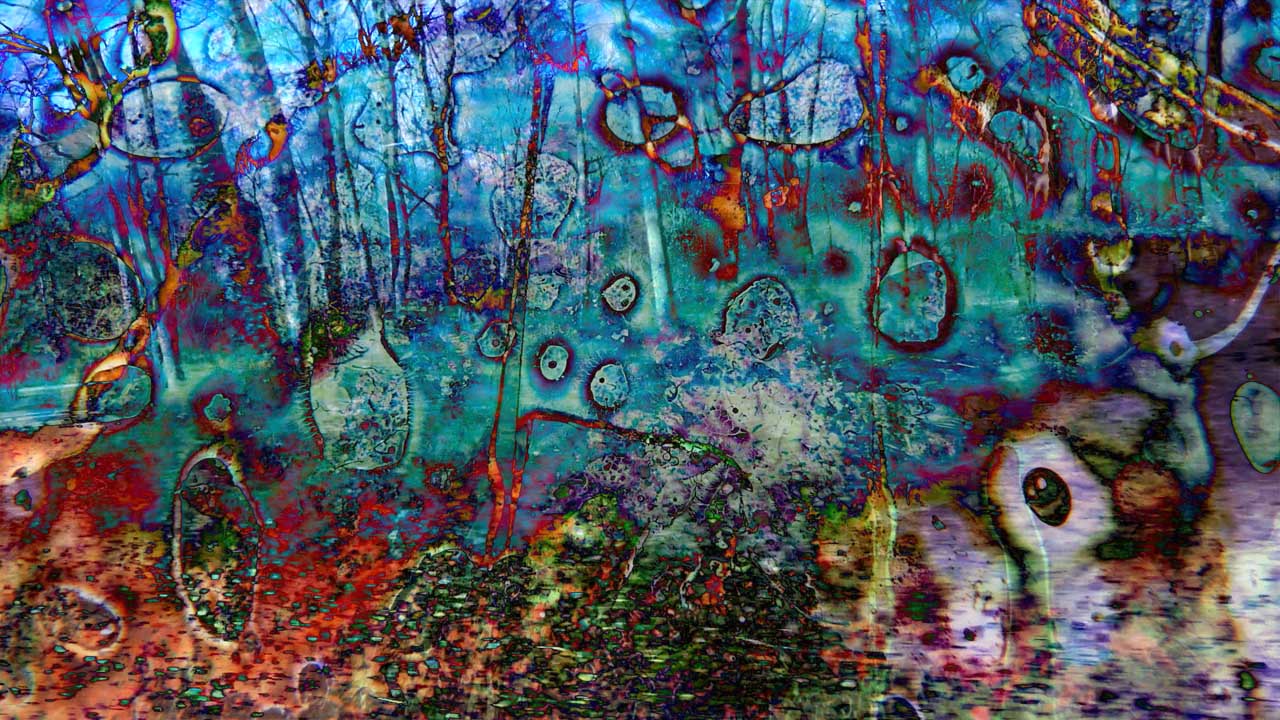Directors Lounge Screening: Mélissa Faivre, Parallel Perceptions, Thursday, 30 June 22, Z-Bar
Mélissa Faivre, born 1989 in France, is an experimental video artist based in Berlin.
Mélissa Faivre creates a world of her own, a video cosmos that combines the micro and macro world in a stream of images like in a flush of expanded consciousness. When watching her films, the mind of the viewer ceases to ask, how one image combined with another image creates a new meaning like in traditional film montage. The flow immediately takes the analytical viewer into a different world, a kind of experience, from which single images (re-)surface and combine with other images that seem to be captured by the mind like single memories on a journey. If we like to stress the difference between film and video, we must say, the way Melissa Faivre edits her films using compositing of several layers is deeply rooted in the tradition of video, even though she has started to also use analogue material, lately. Different layers combined of similar images, sometimes with different treatment of the same material, sometimes negative / positive, often in juxtaposition of each other, sometimes in short edits, creating a rhythm, and combined with music and sounds all come together in a stream. Melissa Faivre challenges the perceptions of the viewer with a colorful, mesmerizing film program at Z-Bar.
The artist will be present for Q&A. Curated by Klaus W. Eisenlohr.
Thursday, 30 June 2022, 9:00pm, Z-Bar
Bergstraße 2
10115 Berlin-Mitte

“Under the Midnight Sun (2022)” is a film composition with very strong black and white contrast, similar to recording with lithographic film. It creates a midnight atmosphere, when light and shadow separate with only few shades of gray. The sun or moon, and out of focus lights hover over a cityscape and are intercepted with a dancer in white whose shape, completely out of focus, seems to float like that midnight sun above the city. Then, slowly the image and sound desintegrates, the sound to noise and the image to black and white patterns. It may be a dystopia of white heat and black carbon, in the end.

“The Becoming (2020)” starts with bright, illuminated colors painted on adhesive tape that looks like a film strip, then images of animals, conserved at the natural museum pass by camera tracking, superimposed with images of branches of bushes and of cracks of paint on photographic film. The sound of an 8mm camera interferes with the music and outdoor atmospheric sound. Some parts of the video recall the old avantgarde master of painted film, Stan Brakhage, however the making and the feeling is contemporary, created by video compositing. Floating fish, birds and passing street views are intercepted with organic forms, which could be interpreted as cells, crystals or spores, as primitive forms of life. The viewer receives the perception of a connecting organic whole.

